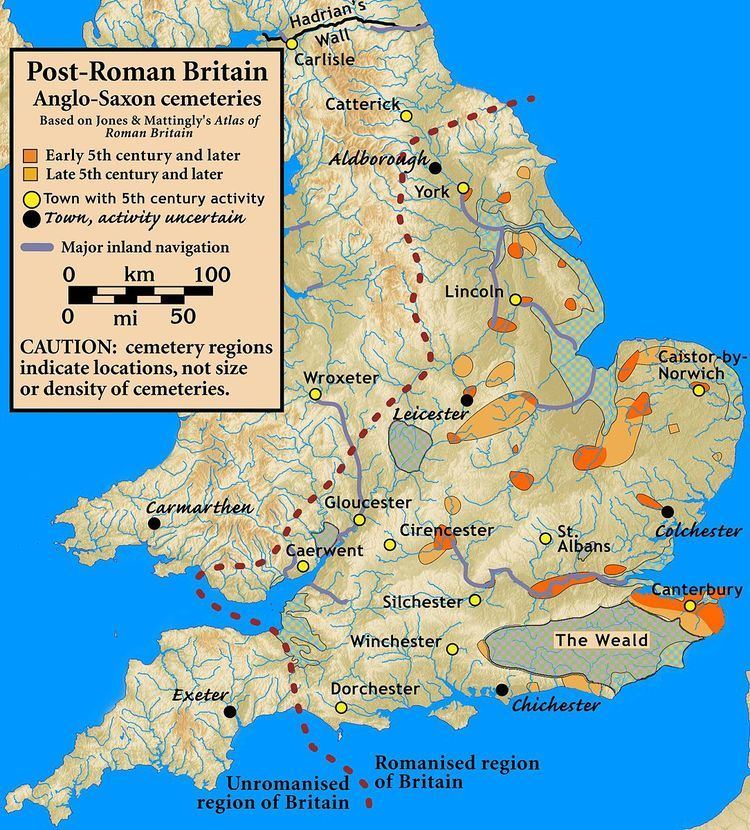 | ||
The Battle of Guoloph took place in the 5th Century. Various dates have been put forward: 440 A.D. by Alfred Anscombe, 437 A.D. according to John Morris, and 458 by Nikolai Tolstoy. It took place at what is now Nether Wallop, 15 kilometers southeast of Amesbury, in the district of Test Valley, northeastern Hampshire. The battle pitted a Britonnic alliance against invading Jutes and Saxons. The Britons were victorious.
Contents
Context
In his book, Historia Brittonum, Nennius affirms that The reign of Vortigern, and the fight between Vitalinus and Ambrosius in Guoloppum, the Battle of Guoloph, are separated by twelve years.
In the 12th century A.D. (largely fictitious) pseudo-history written by Geoffrey of Monmouth - the Historia Regum Britanniae - Ambrosius Aurelianus (Emrys Wledig, the imperator) is considered the son of the emperor Constantine. Geoffrey of Monmouth states that while Ambrosius was a child, his entire family was assassinated with only him and his brother Uthyr Pendragon making their escape via a canal at the court of their cousin, Budic I of Brittany. This attack was allegedly perpetrated by Vortigern, governor of the city of Dubris, one of the most important ports in the kingdom. Vortigern had formed a pact with the powerful Jute kings, Hengist and Horsa.
Years later, Ambrosius returned to Great Britain, disembarking at Totnes (Devon), a reunion of the monarchs of all the kingdoms of the south with the purpose of forging alliances and solving collective problems. It was there that he was able to convince the Romano-British leaders of the Jute menace and of their alliance between Vortigern.
Archaeology and Legacy
In the parish of Nether Wallop, northeast of the town of the same name, there is a fortress on the hill of Danebury dated to the Iron Age where a multitude of excavations have taken place between 1968 and 1988. There is no evidence of its occupation during the Roman period, but there is ample evidence of its fortification in Sub-Roman Britain. The perimeter of the defensive works has been lost to the years, but the trench work is still discernible, archaeologists having found ceramics from the 5th and 6th centuries. This allows the fortifications to be dated contemporarily to the battle between Vitalinus and Ambrosius.
Some historians maintain that Ambrosius himself was responsible for the refortification of Danebury prior to the Battle of Wallop in 437-440, but there is no hard archaeological evidence to support these theories. It is probably that the battle actually occurred further to the south where the enemy would have been able to have taken up a strategic position that the Celtic tradition recalls as Cad Hill (now Chattis Hill) on the border of Nether Wallop and Broughton.
The accounts of Historia Britonum place the Battle of Guoloph as having occurred in 437-440, some forty to fifty years before the historian Gildas places the battles commanded by Ambrosius Aurelianus. This leads historians to debate the accuracy of the first accounts of these conflicts or that they refer to different persons.
